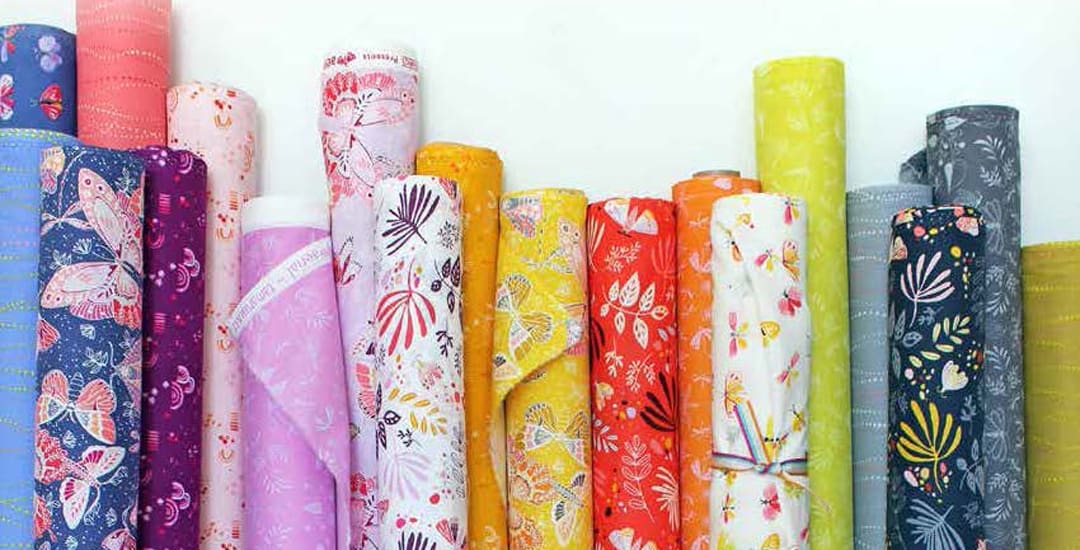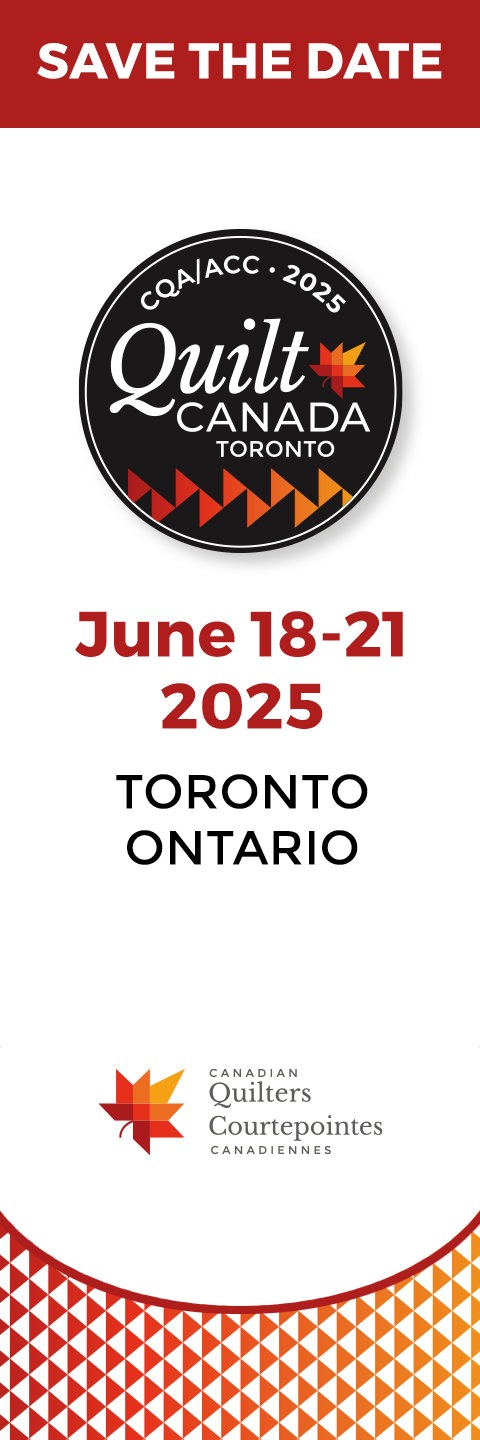My love affair with fabric began when I was a child, when I could frequently be found rummaging through my mom’s sewing cabinet, fascinated by all the pretty patterns and colours that were contained within. There is a strong history of textile making and textile appreciation with many of the women on both sides of my parents’ families, whether through garment sewing, weaving, quilting, embroidery, lace making or rug hooking, but for me it always comes back to the patterns and the colours, something no doubt heavily influenced by my Caribbean upbringing.
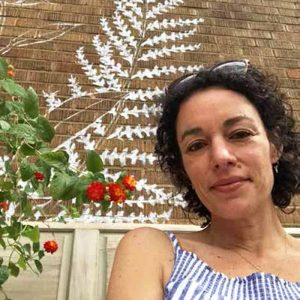
That inherent love, coupled with having studied textiles, graphic design and art history at the Nova Scotia College of Art & Design gives me a good, solid base to draw from today in my role as a fabric designer. I have joyfully been able to use that title for seven years now as part of this creative business I have crafted for myself (other hats I wear regularly are that of quilter, teacher, illustrator and product designer).
So, what does designing for fabric entail? There are many traditional, hands-on methods to create pattern on fabric (block printing, stamping, screen printing, freehand painting, etc.). For the fabrics we buy at our favourite local quilt shops, however, the process is multi-faceted. The essentials can be pared down to four basic steps:
- Mark making: this can be accomplished in a variety of different ways… painting, sketching, print making, computer-generated design, to name a few.
- Creating a repeat pattern: whether manually with paper or with the aid of computer programs like Illustrator® or Photoshop®, this step is essential for going from design or image to fabric yardage.
- Determining colour and scale: this is a favourite of mine!
- Printing: typically done mechanically (industrial screen printing) or digitally (computer files printed electronically).
The first three steps above are undertaken by the designer and/or fabric house and the fourth by a fabric production facility.
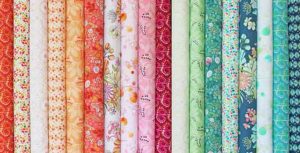
In terms of mark making, while many artists have their preferred technique, I have probably used all the methods outlined over the past seven years. Like many people, my creative interests are vast and ever-fluctuating, resulting in the varied toolbox I pull from. My current favourite is painting with watercolour and gouache, but my fabric collections are rarely based on just one technique.
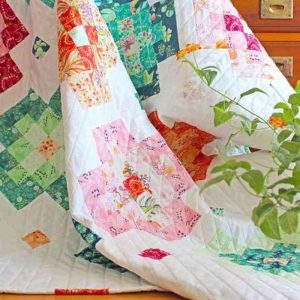
Within a fabric collection, one ideally wants a good balance of scale (some larger prints and some finer ones), types of designs (both condensed, busier prints and some gentler ones that give the eye a place to rest), and value (dark, medium and lighter prints to offer a full range to the quilter). And then there is colour. For some designers, this is decided upon after all the design work has been completed, but for me, I usually can’t wait that long. Typically a colour story is playing in my head before I even begin a new collection. Sometimes this changes along the way and other times what I send out to the fabric house is not quite what I get back (for better or for worse). One thing is for certain, however: I am not a designer that likes working in a constrained pallet! Colour can be a source of such joy, and is an element I try to focus on whenever I am designing.

I started designing fabric about nine years ago through the US-based Spoonflower website, simply as a creative exercise. This platform offered me the ability to play regularly with design due to their weekly design prompts and contests. I loved the immediacy of the digital printing method they employ, which meant I could receive fabric with my own designs within a few weeks, with low commitment (one can order as little as an 8″ square of fabric at a time). Having my designs visible on their site lead to a number of work opportunities such as designing for a children’s clothing company within the first year, but it also brought the thrill of being offered an ongoing contract as an independent designer with Michael Miller Fabrics.

Fourteen fabric collections later, with one, Frolic, that even included a range of knits, I can honestly say that my time with Michael Miller has taught me immensely about the process and the ever-evolving industry, much of which I share in greater depth when I visit guilds to present trunk shows or lectures. Over the past few years I have exhibited many times at Quilt Market, the industry trade show in the US. where new fabric collections are presented to international buyers and distributors, and thus been introduced to countless other designers and industry partners with whom I could collaborate (sewing machines, thread, machine embroidery, etc.). In short, this line of work has thrown me into the quilting world at full force, a place where I am delighted to have personally found so much on-going inspiration, a real sense of community, incredible professional affiliations and opportunities, and of course, my love of quilting!
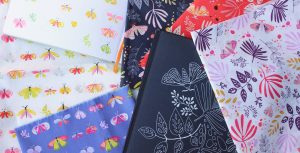
In my desire to always be learning, I decided last year that it was time to shake myself out of my comfort zone and try working with a new team. I am thrilled to have found a place at Windham Fabrics with whom my fifteenth collection, Aerial, is being produced. It will be presented to shops in September and start shipping to stores in January, 2021. Not surprisingly, colour plays a key role within.
The adjective I love hearing people use to describe my fabrics the most is “happy”. It puts a huge smile on my face every time! Visit Tamara’s website and shop; follow her on Instagram and Facebook @tamarakatedesign.

